
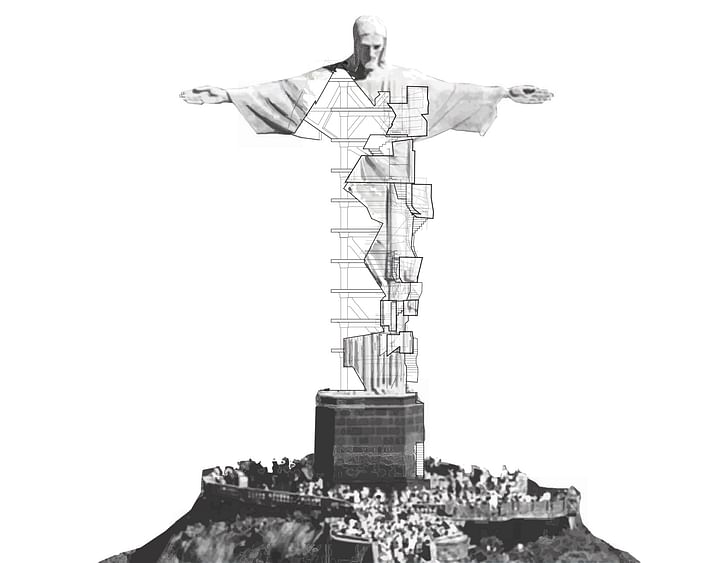
What defines a monument? According to “The Heresy of Function, Reprise,” a senior project studio at Cal Poly Pomona run by Frank Clementi (of Rios Clementi Hale Studios), the essence of a monument isn’t based on its utility (or overt lack thereof), but rather its intangible qualities or “meaning.” In order to investigate the apparent meaning of a monument, this Student Works explores the metaphysical import and power of various famous monuments by attaching architectural “prosthetics” to them, applying a programmatic addition to “create a complete, if however incongruous, symbiosis of function and meaning.”
Like viewing the corona of the sun, the intangible meaning of the monuments is brought into sharper understanding, or questioned entirely, as the students’ prosthetics either alter or eclipse the structure’s familiarly significant form. In their project descriptions below (edited for length and clarity), Clementi’s students explain the new potential interpretations and uses of their monument – from developing parasitic favelas onto Christ the Redeemer to redefining the “Frenchness” of the Eiffel Tower.
Sarah Etat: Corporal Eiffel Tower: "Eiffel, but I Got Up"
In 1889, when the Eiffel tower first opened as the entrance to the World Fair, the tower was a monument of power. The tower's popularity became so overwhelming that the tower no longer represented a monument of France, but a monument of the world. Now, in 2016, the French Like viewing the corona of the sun, the intangible meaning of the monuments is brought into sharper understandinghave set out to reclaim this monument as an architectural piece that truly identifies with France. So, what could be done to the tower to make it "French?" The project comes with the realization that France is a secular state, and has been attempting to limit religious conflict. Yet, to recognize what France is today, a piece must be added to identify with the diversity that is being hidden away. I experimented with a series of methods such as hanging from, attaching to and filling the tower. The result was an attached feature that doesn't obstruct the tower's current structure, but rather, wraps around it and interferes with the experience of circulating through it. Thus, attached to the tower are body parts, which externally identify with the French obsession with beauty and the human body. What isn't evident from the exterior, however, is that the body houses the Institution of Comparative Religion. Ultimately, the tower becomes a representation of France as it is today.

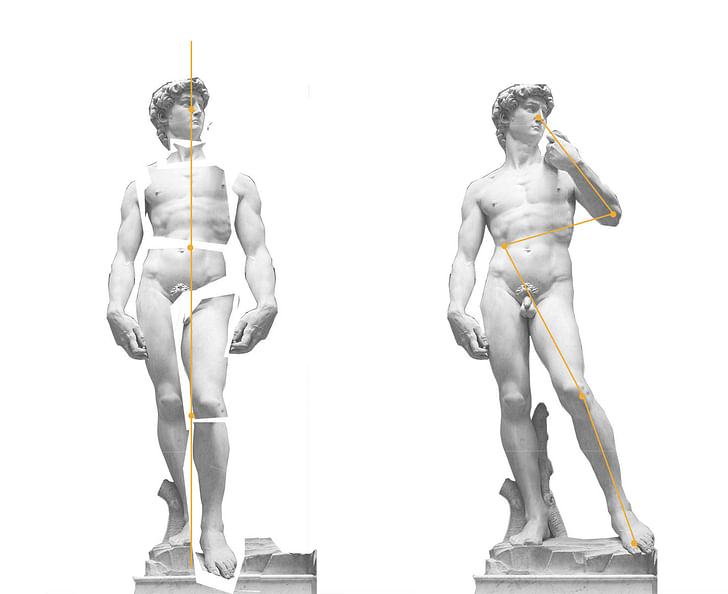
George Abraham: Washington Monument
This project operates upon the Washington Monument in order to address the dichotomous history of protest and governance surrounding the site. The interventions provide a space for reorientation for the Senators. They will dwell in the void of the protest, communally. The vantage point above the horizon will allow for the senators to connect themselves to the lands they act on behalf of. They will feel the presence of the nation watching them as they perform their lives. This omnipresent eye of the nation, coupled with the arabesque and grotesque atmosphere of the void, will serve to unify the members of the Senate in their task of legislation. In order to rectify the anguish felt by those persecuted by the shortcomings of the law, the monument is subtracted from. The history of protests on the National Mall is harvested as the driver for the void. Subsequent to the subtraction will be the reconstruction of the monument as a true obelisk. The monument will then achieve a quasi-monolithic status instead of its feeble existence as a fake monolith. This will also allow for the resolute reading of these cavities. The resulting monument will operate as a symbol of the democratic energy the nation was founded upon.

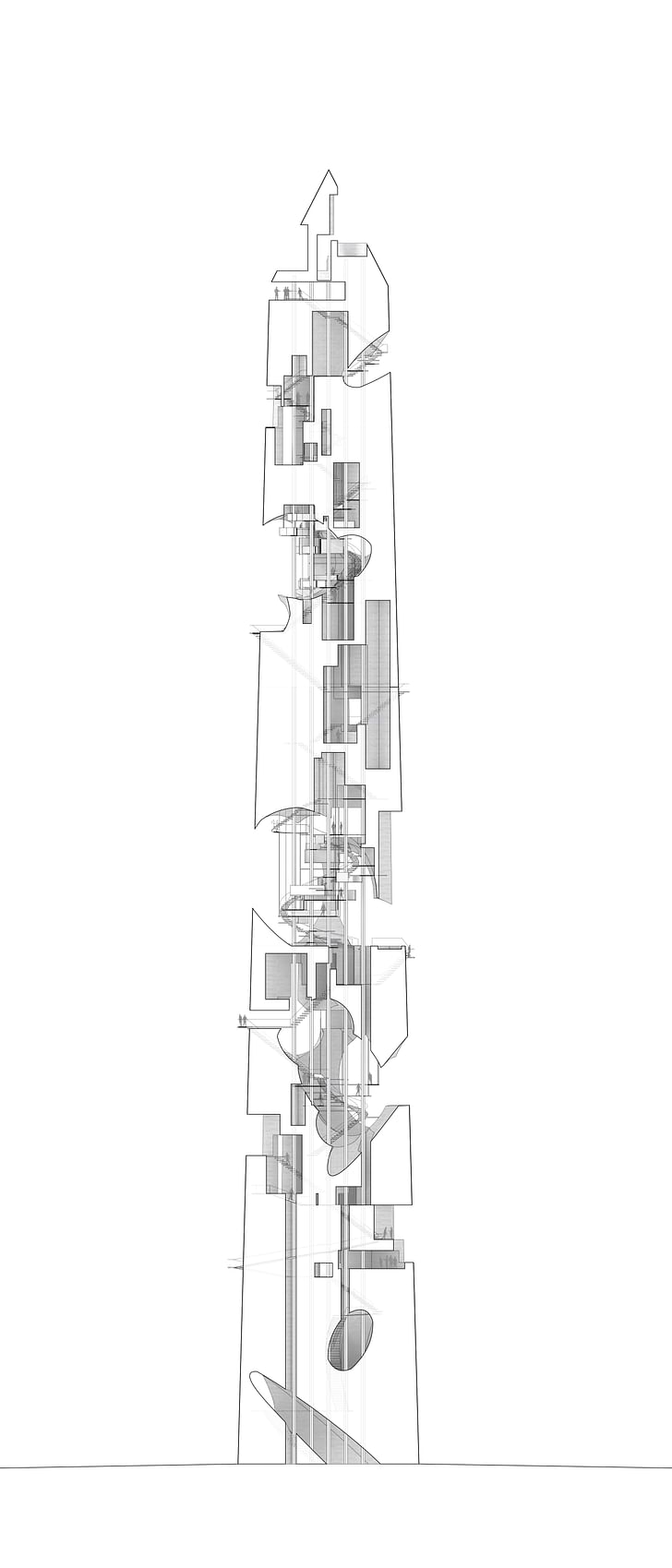
Noel Vasquez: Situationist Eiffel Tower
This project takes the Eiffel Tower and tests its only function, its monumentality. The way this experiment is conducted is not by altering the monument itself but instead altering its location. If successful, the Eiffel Tower’s new site will receive comparable Parisian psychogeographical characteristics. Consequently, our perception of the tower will also begin to shift. The result will inform a renewed appreciation for monument, city and landscape using Situationist techniques of dérive (drift) and détournement (rerouting). Guy Debord explained that “from a dérive point of view cities have psychogeographical contours, with constant currents, fixed points and vortexes that strongly discourage entry into or exit from certain zones.” This project attempts to change the perception of places through one architectural catalyst, and conclude new ideas of the catalyst as well. This is for the development of new psychogeographies, which imprint new programs that generate activity onto those that once did. The Eiffel Tower will tour different sites throughout the world. For this proposal we can see the first of these examples: Detroit, Michigan.

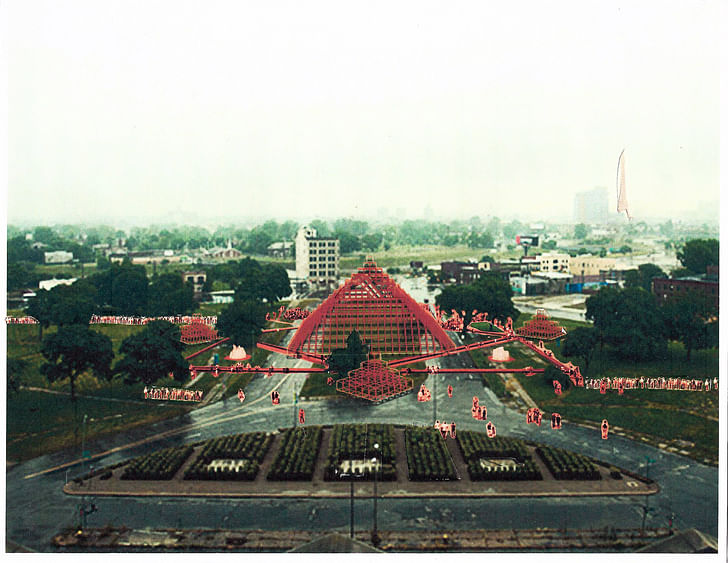
Parker Ammann: Arc De Triomphe
I chose the Arc De Triomphe because of the way it existed in my memory: the presence it presumed in the middle of that twelve street traffic circle. A DMV would now occupy the Arc De Triomphe, encircled by an outdoor park space where visitors could queue. The way The Arch was originally meant to be approached, and passed through, can only be seen by car. The pedestrian with the power to fully approach the monument is forced to do so through underground passageways. That is where I found the window to exploit. I wanted the experience of going around an object and approaching an object to be melded together.
I discovered the blur through collage. I wanted the experience of going around an object and approaching an object to be melded together I took the views going around the arch, stitched them back together, and then diagrammed the experience of perspective and distance into a graph on top of that, and then incorporated remapping to overlap experiences. Using the elevation and plan to get coordinates I could construct the section views through graphing points. From the section views I could generate the three dimensionality of the prosthetic by treating each section as a frame. What I really enjoyed about the project was something I had unintentionally done, but logically was the only way it could have happened: I realized how bluntly I had translated from one to three dimensional representation.

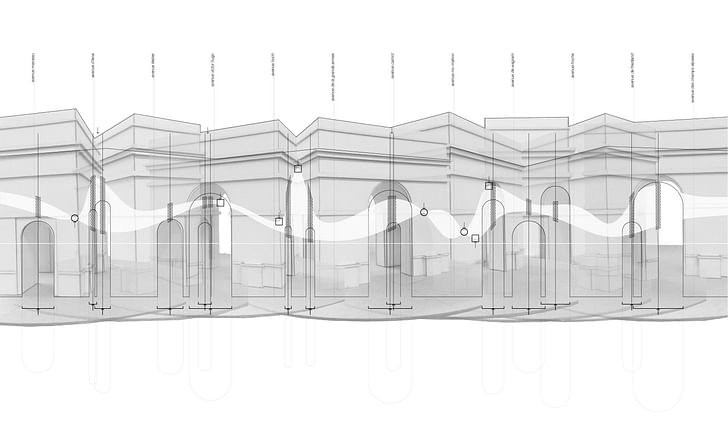
Daniela Martinez Hernandez: Christ The Redeemer
Built to commemorate the 100th independence of Brazil, Christ the Redeemer is located in Rio de Janeiro, on top of Corcovado Mountain where he overlooks the entire city. For many locals Christ the Redeemer is not a Christian symbol, but the representation of a city with open arms. However not everyone is welcome in the city. The monument would directly benefit the displaced by providing space for their housing, but would the housing benefit the monument?Those expelled by the city have built autonomous small cities along the outskirts of Rio called favelas. Because of the poverty and lack of education these places became containers of crime and violence. For a long time favelas were “no go” places even for the police. However, since Brazil became the host of the World Cup and the Olympics, the favelas started to attract attention and criticism. The Brazilian government responded by enforcing pacification programs that have cleaned up some of the favelas. But, ironically, the betterment of the conditions in these places has brought unintended consequences for the residents, one of which is slum tourism. This project explores the way a field of unconventional housing like favelas can infect, integrate or appropriate an object like Christ the Redeemer. The monument would directly benefit the displaced by providing space for their housing, but would the housing benefit the monument? Christ the Redeemer is a relatively small monument, and housing could help its monumentality. However as the residents increase, the field could eventually take over the object. Since square footage is limited, the families would have to share spaces in a similar fashion to how two or three families share a favela home. The site would naturally become a touristic place in which people would admire or judge the way people live in. The monument would not be exclusive for the residents since limited access is provided for the outsiders, therefore creating another layer of communal spaces.
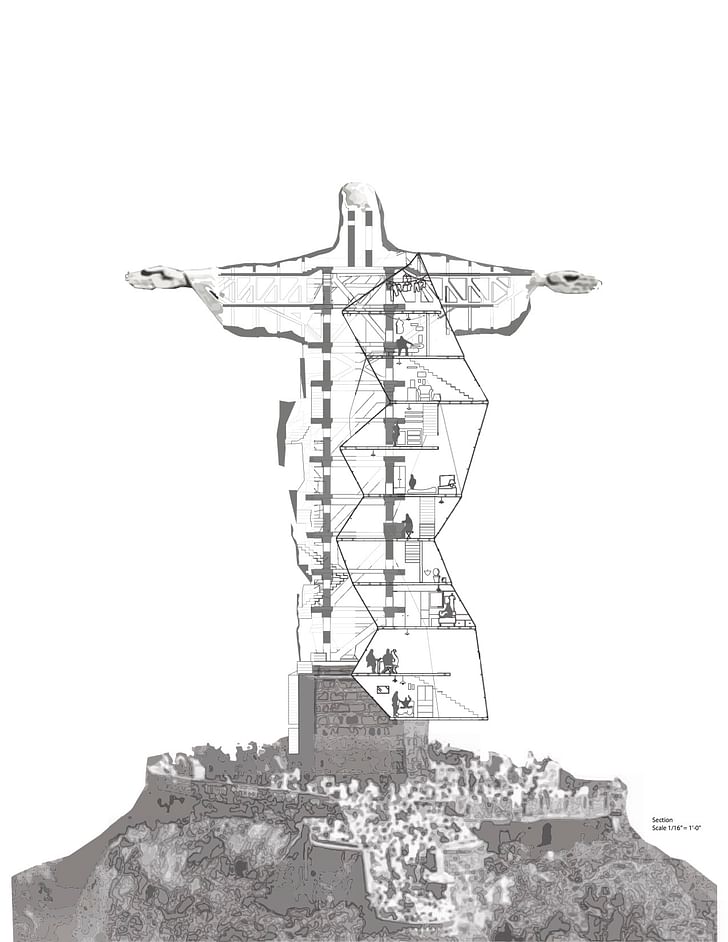
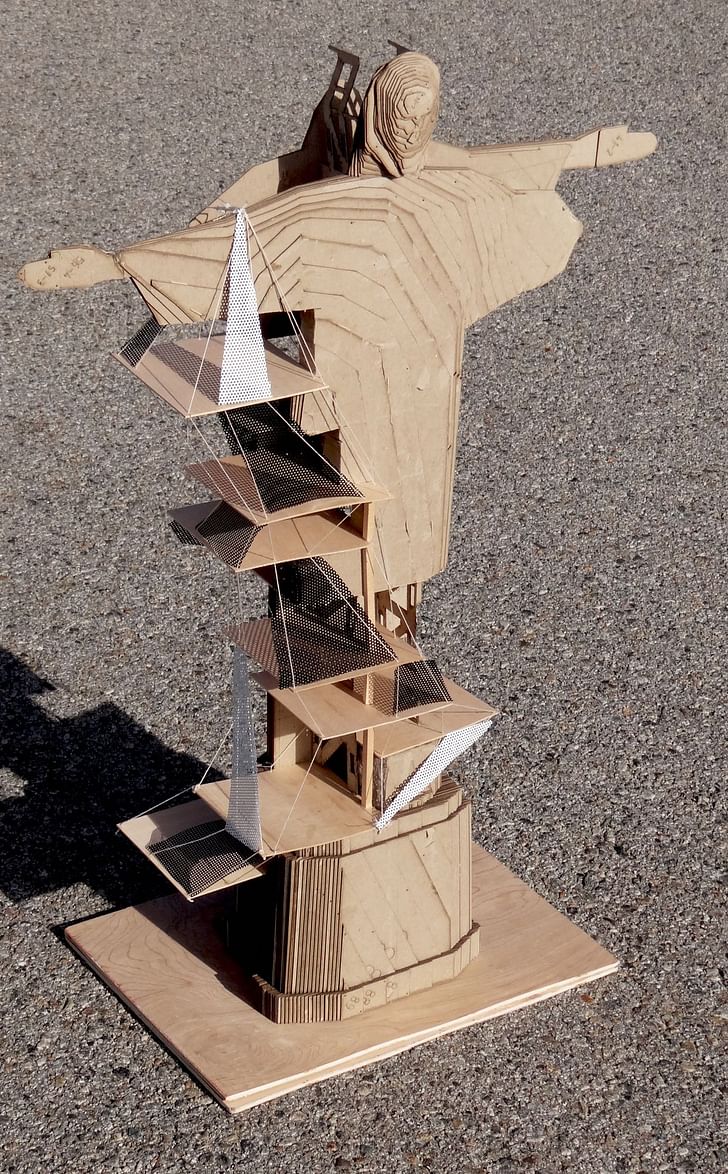
Manuel Zermeno: Stonehenge Reliquary
Stonehenge was an ancient burial site, a healing center, a solar calendar, and a pilgrimage destination. Its type of ‘use’ has ranged spanning its 5000 years of existence, but its true purpose has long been lost. Its massive scale suggests that Stonehenge was vital to the ancient people who built it. Yet In the 1900’s we restored it. Why was restoration necessary if only now Stonehenge, like most monuments in the world, is useless? Thus, the purpose of this project was to create an augmentation that would assemble a complete, or a story perhaps, symbiosis of function and meaning. The sacred monument itself would be untouched, but its symbolism and specificity would cause an assemblage of other useless objects anonymous to their purpose. Influenced by Russian art theory of Suprematism by Kazimir Malevich and El Lissitzy, the method of the project began by taking objects that were once important but have now lost their usefulness. Two-dimensional representations were taken of these objects to abstract them from the context of what they were or where they came from. The appearances of their origin were in themselves meaningless. The scale and material became irrelevant. Instead, the essential thing was pure feeling. In all operations, space was created through assemblage of representations of objects, not necessarily giving the objects their old or new volume. They acted as planes, folding and intersecting with each other to create spatial intimacy, rhythm, and specificity.

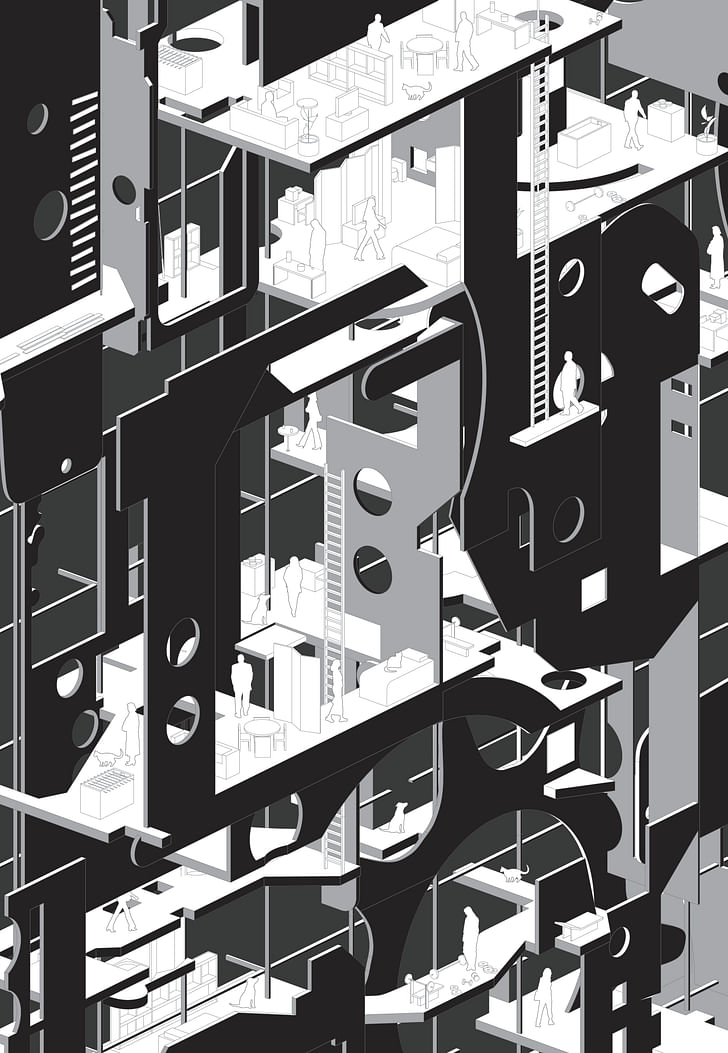
Saba Salekfard: Taj Mahal Narrative
Built in 1648 by Shah Jahan, the Taj Mahal stands as the monument for true and enduring love. The mausoleum was built as a symbol of the Shah’s eternal love for his wife, Mumtaz Mahal, proceeding her death. What most do not know about this love story is that the Shah actually had 8 other wives. Thus, in this proposal, the Taj Mahal will focus on and be dedicated back to the other wives. By moving them back onto the site, the Taj will function as a love hotel, aimed to explore other forms of love. In their honor, eight precedent rooms were created, House[s] of: Yearning, Broken Relationships, Courting, Glorious One-Night Stands, Narcissists, Earthly Pleasures, Lost Relationships. Each serving their own functions, the houses aim to: ponder, fix, consummate, explore, engage, indulge, and rekindle relationships. The Taj The sticks could stand alone as a new monument: a new icon for the changing ideas of love thus becomes a love nest; a place for rendezvous; a 3rd space, where the public comes for a private meeting. Consequently, nest construction becomes the method to formulate the architecture. Rooms first form volumetrically, then move to linear, planar conditions to accompany the nest construction. Since the architecture doesn’t lie in the sticks alone, it then must reside in the way the sticks are assembled. If sparse is reduction, clarity, and planar, then density is increase, ambiguity, and volumetric. Using the tectonics of layering and placement, the sticks use the rules of sparse vs density to fill the Taj. The nest construction aims to densify the Taj to the point that if it were removed, the sticks could stand alone as a new monument: a new icon for the changing ideals of love.
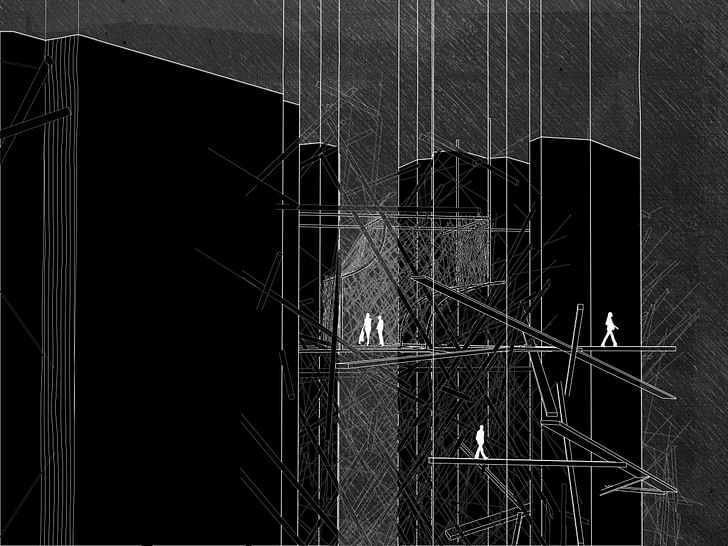
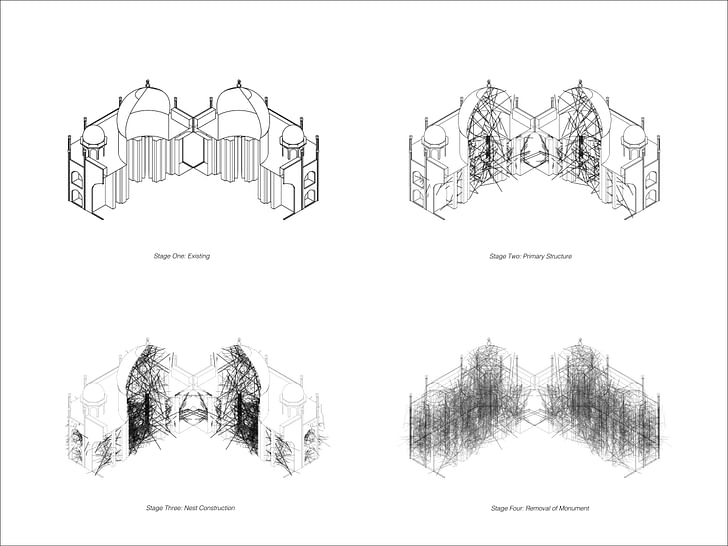
Laida Aguirre: Arlington Archive
Cemeteries are a rare hybrid of the monumental and the functional as they serve to house our departed while simultaneously memorialize them. As an indexical architectural proposal for the expansion of the Arlington National Cemetery, this project proposes to honor that simultaneity In effect, the overwhelming aggregate of the objects is used to stitch together the individual with the collective memory by celebrating and magnifying this duality. It takes note of the recent controversy over the mismatch of personal files and burial spots and proposes a thorough overhaul of the organizational system of the site. ‘Arlington Archive’ is a replicable set of instructions, along with a catalog of parts, for a set of six small transparent towers. Finding prose in the mechanics of giving instructions, the act of hoarding objects and later arranging them, the project is a step-by-step approach to organizing memories and information. It is a proposal in three parts:
Each tower serves as a display case to represent the individuals buried within a set radius by accumulating objects of significance and amassing them into an exposed legacy. As one walks up the tower, each floor acts as a prism through which the symbols of the buried are translated. In effect, the overwhelming aggregate of the objects is used to stitch together the individual with the collective memory. Fragmented yet overwhelming with information, it offers a new vantage point to one’s legacy. Through form, method and content this proposal attempts to mirror the complex simplicity of the cemetery while introducing a meticulous organizational system to address its practical shortcomings.
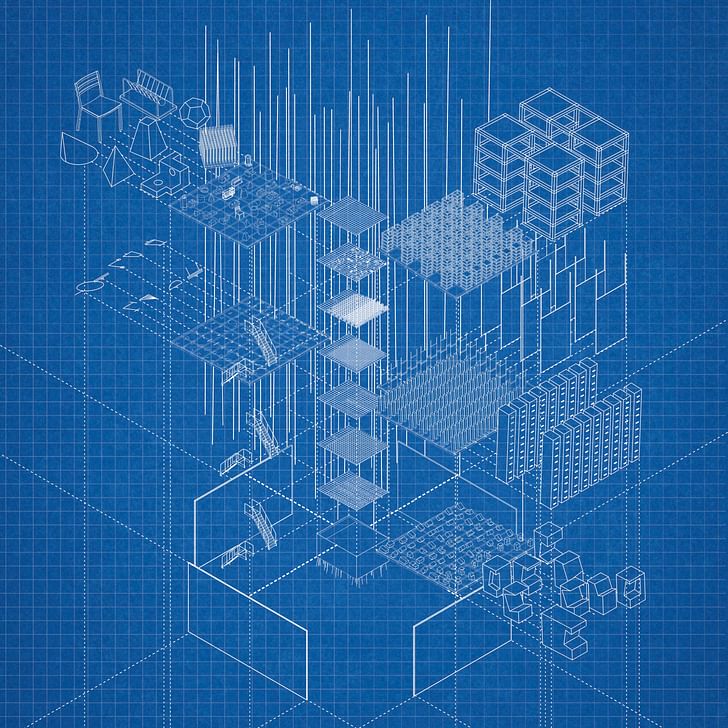
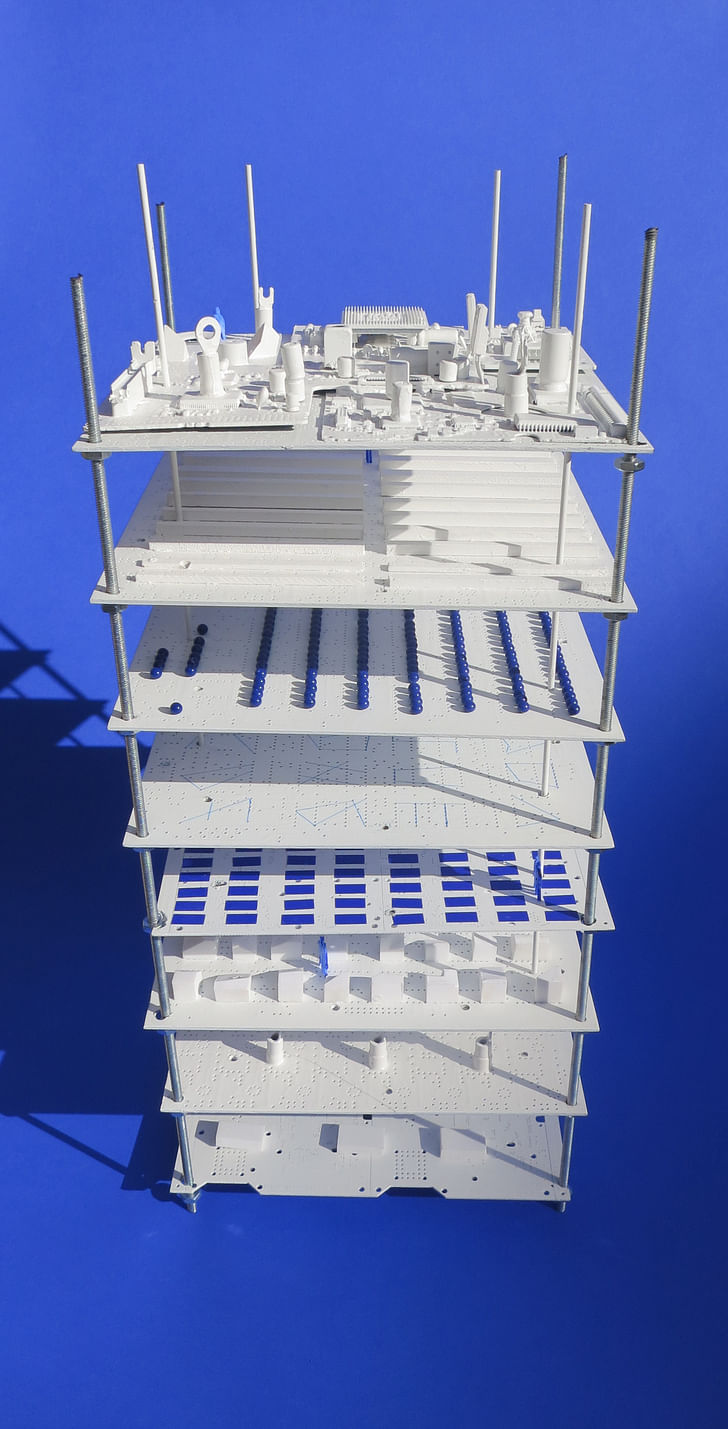
Julia Ingalls is primarily an essayist. Her work has appeared or is forthcoming in Slate, Salon, Dwell, Guernica, The LA Weekly, The Nervous Breakdown, Forth, Trop, and 89.9 KCRW. She's into it.
6 Comments
dope
Awesome! Thanks for doing this article about us. It is great to see our school being promoted and getting more recognition for all the work we do here.
This is great stuff, full of genuinely lovely ideas, Cooper-esque.
Very nice drawing.
Fantastic! Commentary and drawings here are equally great!
Fantastic stuff coming from my alma mater! The graphics are very well done. Seeing this kind of stuff always makes me want to go back to school.
Block this user
Are you sure you want to block this user and hide all related comments throughout the site?
Archinect
This is your first comment on Archinect. Your comment will be visible once approved.